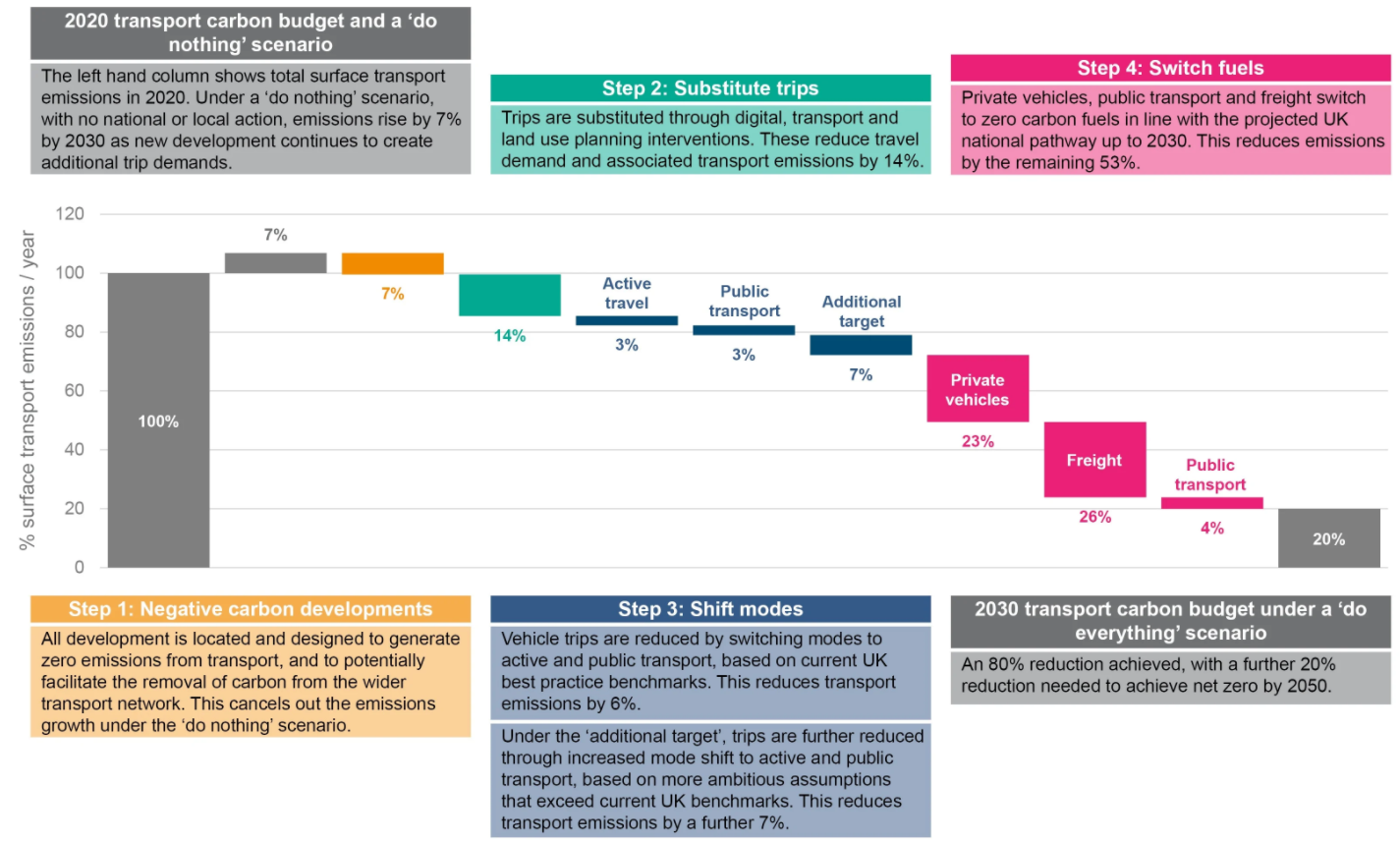 Richard Blyth FRTPI is the RTPI’s Head of Policy, Practice and Research. This is the third in a series of weekly blog posts from Richard on the RTPI’s key asks of the government concerning its proposals for reform of the planning system. Read the first post here and the second here.
Richard Blyth FRTPI is the RTPI’s Head of Policy, Practice and Research. This is the third in a series of weekly blog posts from Richard on the RTPI’s key asks of the government concerning its proposals for reform of the planning system. Read the first post here and the second here.
The planning system in England is focused on the allocation and granting of permission on land to deliver homes and commercial development. It has not to date given such strong consideration to the impact on carbon emissions or the important role of placemaking in facilitating local living.
Meanwhile, the transport planning system often remains constrained by the traditional approach of predicting demand and providing road capacity to meet it, instead of focusing on trip reduction and the promotion of active and public transport as genuine alternatives to the private car. The transport and land use planning systems are therefore dependent on each other to deliver the outcomes we need, but each has often operated in isolation.
Transport Decarbonisation Plan
Given this backstory, you can imagine I was excited to see the publication yesterday of the UK Government’s Transport Decarbonisation Plan. With the planning reform also being advanced by the Government, there is a real opportunity to change how we approach transport planning for the better, integrating net-zero into planning from the outset and equipping developers with the tools, policies and security to decarbonise transport.
So have we finally reached the working together which was glimpsed when the Department for Transport and the government’s planning responsibilities were in the same department (from 1997 to 2001)?
Well yes – and no.
On the plus side, the Transport Decarbonisation Plan says:
And why is this necessary?
It would certainly be great if national planning policy encouraged the best locations for development rather than the ones which can ‘deliver’ housing most quickly. Our Location of Development research has kept track of this issue and the third edition of this is expected shortly.
However, on the other hand the Government is also very keen that we should go on flying and driving.
Promotion of active travel depends partly on making other choices more difficult. And enabling all that flying and driving requires a lot of land, and the allocation of a large proportion of road space to private vehicles and freight. It is true that you could create space for walking and cycling alongside roads in the countryside by taking space away from fields, but in towns and cities the total road space is finite. The difficulties created by rising car traffic such as congestion and noise are not solved by altering their fuel.
Role of planning
Earlier this year, the RTPI released the report Net Zero Transport: the role of spatial planning and place-based solutions which explored how planning and place-based solutions can help the transport sector drive the UK towards net-zero emission. Our research set out a pathway for decarbonising transport, whilst delivering better place outcomes.

Whilst there were clear barriers to overcome, including a need for greater integration, funding and an overall behaviour shift, there are strong and realistic opportunities for spatial planning and place-based solutions to help decarbonise the transport sector.
Transport-based technology will undoubtedly continue to improve and deliver a reduction in emissions. However, in order to help decarbonise the transport sector, planning needs to work holistically, with developments and transport planning working in tandem. New developments, such as urban extensions, should be planned, designed and delivered with the aim of delivering ‘Carbon Negative Growth’. Consequently, new developments should feature net-zero transport from the start whilst also contributing to a wider reduction in emission through the encouragement of reduced travel demand and the incorporation of alternative and greener methods of travel.
Alongside the design of new developments, the renewal of current spaces must consider and ultimately incorporate methods of reducing transport emissions. Public spaces must be reimagined, reoriented and regenerated with sustainable methods of transport at their core. Whilst many places across the UK have begun to reimagine their existing developments, a ‘whole place’ approach will be most effective in creating a wholesale reduction in carbon emissions for the transport sector.
Spatial planning must begin to create visions for the future which are inherently focused upon enabling new ways of living. New and existing developments must use design to reduce the demand and use of private and fossil fuel driven vehicles and instead encourage more carbon-friendly forms of transport, ranging from elective vehicles to public and active transport.


